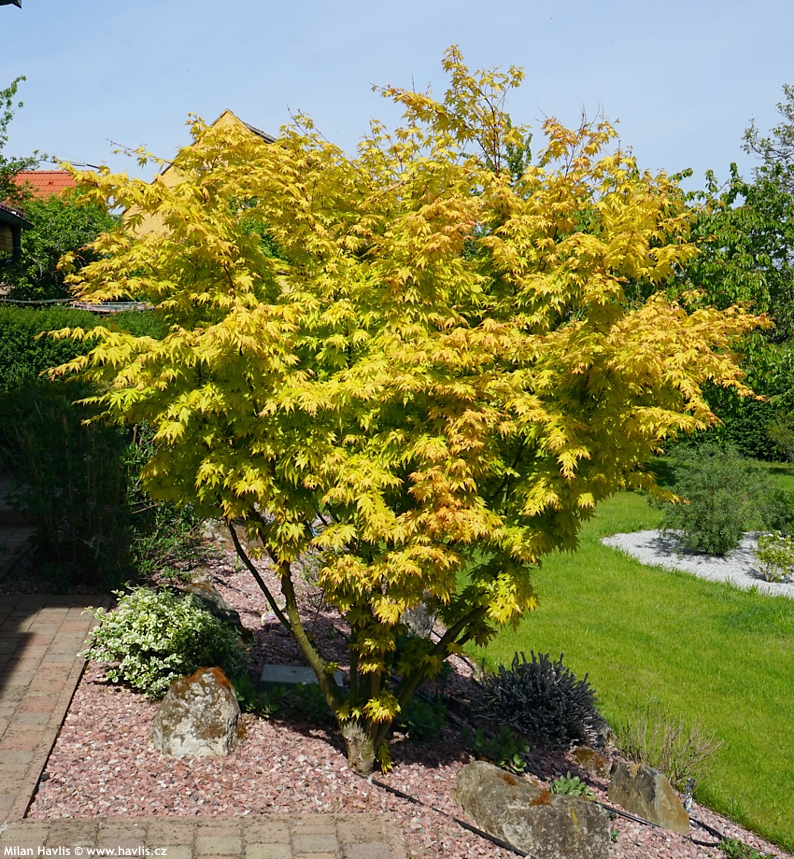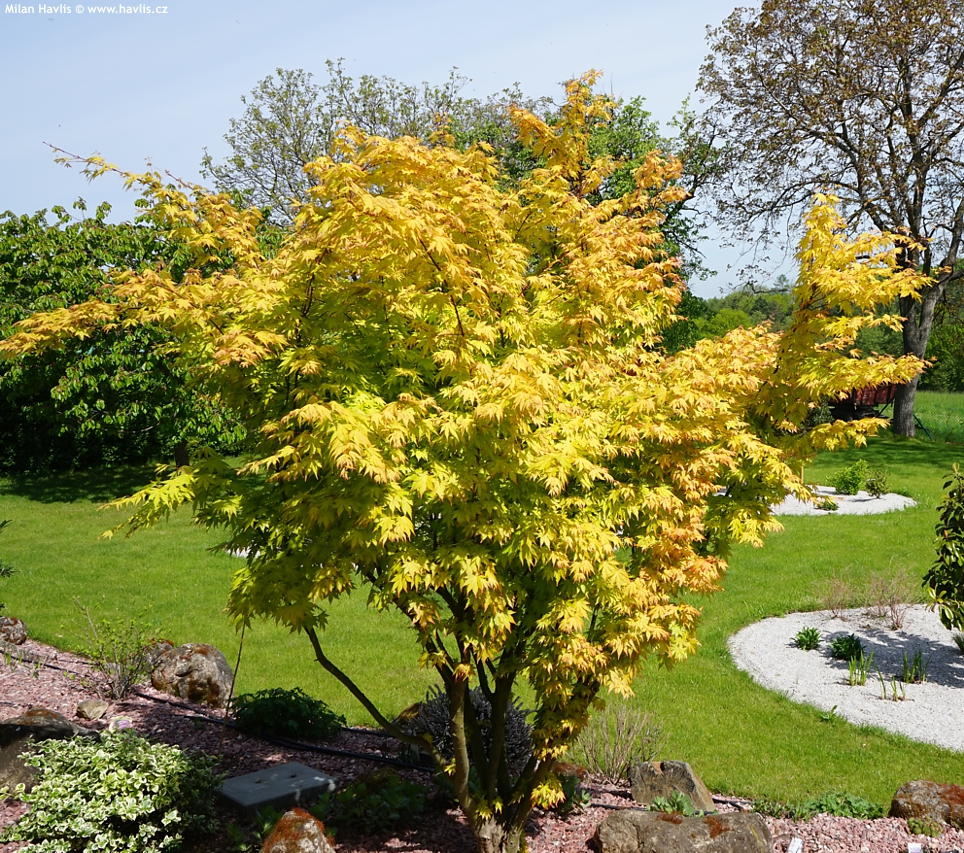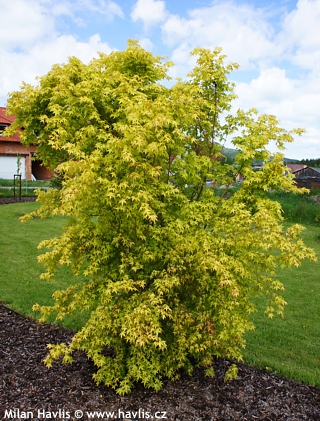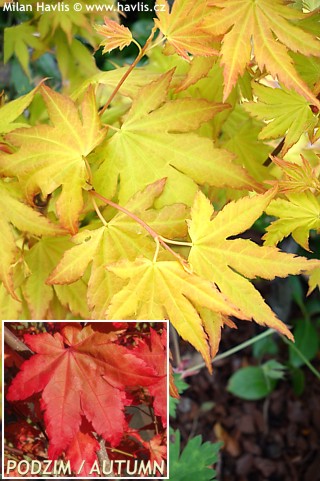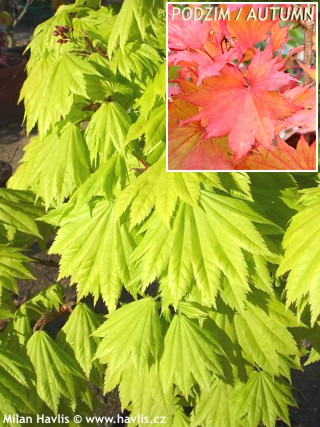Acer palmatum 'ORANGE DREAM' Japanese maple
size/type
medium-sized shrub,medium-sized shrub
usual height
1-2,5m
usual width
1-2,5m
leaves
deciduous broadleaf
colour of leaves
flowers
less showy but noticeable
location
semi-shade / partial sun
soil type
acidic (peaty)
soil moisture requirements
evenly moist (dislikes drought)
USDA zone (lowest)
5b (down to -27°C)
winter protection
for zone 5+6

for zone 7

categorized
Acer
Japanese maples are very decorative and usually low shrubs, occasionally small trees, with attractive foliage and picturesque structure. There are many varieties in various shades of green, chartreuse, golden and yellow, red to maroon, and even multicoloured (variegated). They originate from Asia (Japan, China, Korea), where they have been cultivated for at least two centuries or perhaps even longer, however, they were introduced to Europe only at the beginning of the 19th century, specifically to Great Britain in 1820. Interestingly, the botanist Carl Peter Thunberg described them much earlier, in 1784, because he undertook an expedition to Japan in 1775-1776, discovering new species and collecting seeds and plants. He named the tree Acer palmatum, referring to the leaf shape resembling a human hand with fingers, although it is said that they first reminded him of frog fingers, which is also one of its oldest Japanese names: kaede. The other is momiji (baby hands). The beauty of the colours and shapes of the leaves and trees is reflected in many arts, for example, in the oldest preserved collection of Japanese poetry from the 8th century, the Man'yōshū (Collection of Ten Thousand Leaves). The Chinese poet Wang Wei (699-759) celebrated their beauty in many of his works, and naturally, maples often appeared in ancient paintings, tapestries, porcelain, and wherever classic and traditional decorations associated with the symbolism of these maples were desired: beauty and elegance, serenity, endurance, vitality, and transformation.Description of the plant:
The less usual colour the more attractive it is for garden lovers. Orange Dream is a perfect example of Japanese maple to offer an almost exotic colour of spring foliage that is orange and salmon pink at margins with yellowish-green centres. This colouring decorates the plant until approximately mid June when it changes through yellow colour to light green and only top growths have a weak orange tint. The leaves are deeply lobed but not dissected.It grows slowly, about 10-15 cm per year, forming a densely branched shrub with age. A 10-year old plant can reach a bit more than 1m. Japanese maples also have flowers, not as conspicuous as other flowering plants but nevertheless attractive. They are purple-red on Orange Dream, and appear in first half of spring along with leaves.
Orange Dream prefers dappled shade or partial sun with some shade during the hottest part of the day. Grow it in semi-fertile, acidic to neutral, moist but well drained soil. Keep it mulched all year round. It will love a location with high air humidity, e.g. at a river bank or near a pond. It will not be too happy in a front yard in a town centre surrounded by dry air and hot concrete, or will not love growing in a lawn without mulch above its roots. Fully hardy to min. -27°C (USDA zone 5b).
Last update 12-02-2010
QUICK PRICE OVERVIEW
CURRENTLY SOLD OUT
WANT TO TRY A SIMILAR PLANT?













